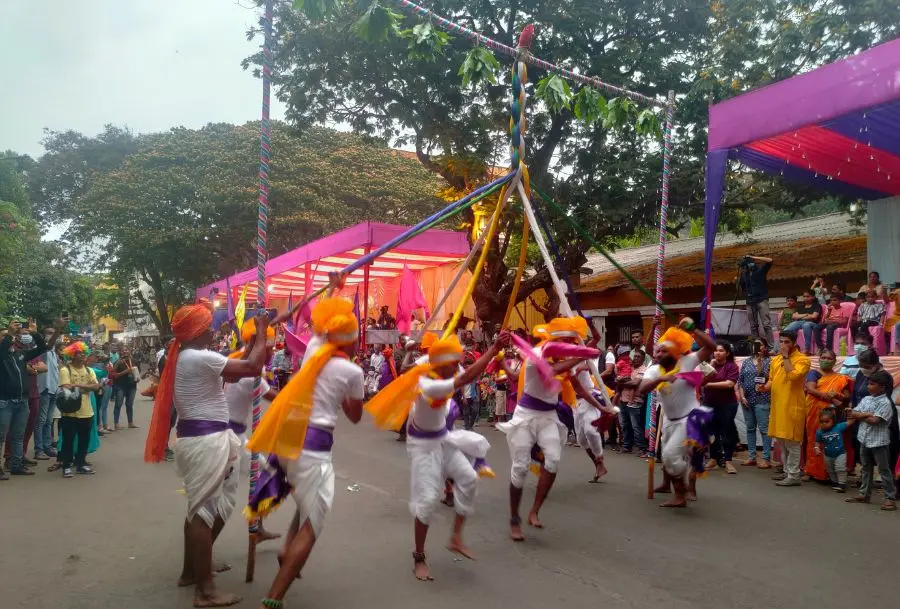Goa is not just about scenic beaches and delicious food—it is also a land of vibrant traditions, music, and dance. The state’s unique blend of Indian and Portuguese influences is reflected in its lively dance forms, each telling a story of its rich heritage. Whether performed during festivals, weddings, or community gatherings, Goan dances are an expression of joy, history, and unity. Let’s explore some of the most popular traditional dances of Goa.
1. Fugdi – The Dance of Women
One of the most famous folk dances of Goa and the Konkan region, Fugdi is performed by women, especially during festivals like Ganesh Chaturthi and the harvest season. Dressed in traditional Navvari sarees, women dance in circles or rows, clapping and synchronizing their movements with rhythmic breathing sounds of “phug!” The tempo gradually increases, making the dance more energetic. This dance, performed in temples, homes, and villages, symbolizes joy and celebration. There are no instruments and relies on the songs chanted by the participants.
2. Dhalo – The Dance of Rural Goa
Dhalo is another traditional Goan dance performed by women, primarily in rural areas. During the Hindu month of Pausha, on a full moon day, women groups visit the maand, village square, to perform these dances. They sing throughout the night, evoking blessings and narrating stories from everyday life and fertility. Women form two rows facing each other and sing while performing graceful movements.
3. Dekhni – The Graceful Storytelling Dance
A beautiful blend of Indo-Portuguese influences, Dekhni is a traditional dance performed by women. It is characterized by slow, graceful movements and expressive storytelling. The most famous Dekhni song, by Carlos Eugenio Ferreira Hanv Saiba Poltodi Vetam, narrates the tale of a Goan dancer asking a boatman to take her across the river. The earliest Dekhni is perhaps around 1869 titled Kuxttoba. The dance reflects the emotions, beauty, and elegance of Goan culture.
4. Corridinho – The Portuguese Legacy
One of the most iconic dances in Goa, Corridinho is a Portuguese folk dance that has been preserved over the centuries. It is a lively, energetic dance performed in pairs, often seen during weddings and cultural festivals. The dancers, dressed in colorful outfits, follow a fast-paced rhythm with quick footwork. The music is played with violins, guitars, and mandolins, giving it a festive feel.
5. Goff – The Dance of Unity
Performed by Goan farmers during the Shigmo festival, Goff is a vibrant dance that involves weaving intricate braids with colorful cords while dancing in harmony. As the dance progresses, the ribbons form beautiful patterns, symbolizing unity and teamwork. The dance is accompanied by traditional Goan folk music, adding to its lively atmosphere.
6. Divli Dance – The Lamp Dance
A mesmerizing display of balance and skill, the Lamp Dance involves dancers performing while balancing brass lamps on their heads. This dance requires immense concentration and is usually performed during religious festivals and temple celebrations. The flickering lamps create a stunning visual effect, adding to the spiritual ambiance.
Goan dances are a reflection of the state’s multicultural heritage, blending Indian traditions with Portuguese influences. From the graceful movements of Dekhni to the high-energy beats of Corridinho, each dance tells a unique story of Goa’s past and present. Whether performed in temples, village squares, or grand celebrations, these dances continue to keep Goa’s rich cultural spirit alive.

















